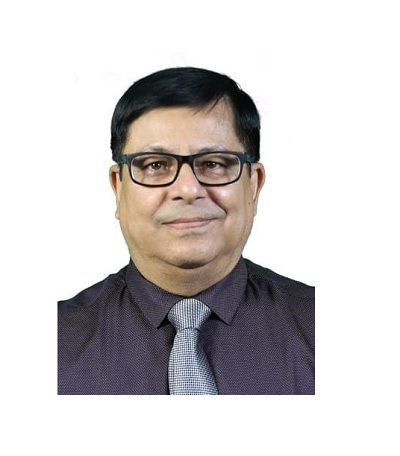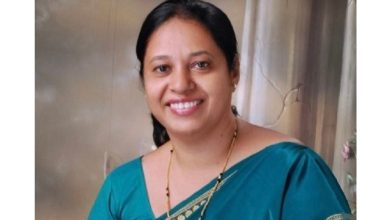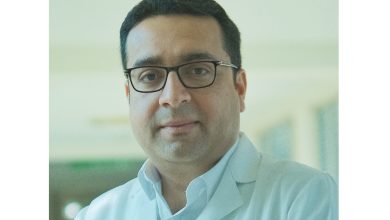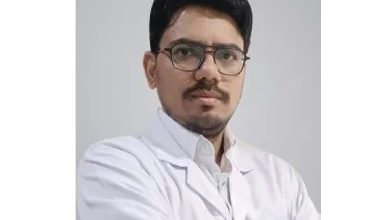
Dr Debasish Gupta, Professor and Head, SCTIMST, Thiruvananthapuram, Kerala gives a glimpse about the Department of Transfusion Medicine at the hospital and how it has evolved over the years
Sree Chitra Tirunal Institute for Medical Sciences and Technology (SCTIMST) started in the year 1976 at Thiruvananthapuram, Kerala, metamorphosed into an Institute of National Importance with the status of a University in 1980 under the Department of Science and Technology, Govt. of India by an Act of Parliament (Act 52 of 1980). Padmavibhushan Dr M S Valiathan, a famous cardiothoracic surgeon of India was the founder-
director of the institute.
The joint culture of medicine and technology that the institute pioneered more than three decades ago has come
of age and gained unprecedented acceptance in India. The institute focuses on patient care of high quality, technology development of industrial significance and health research studies of social relevance. The institute has three wings – the hospital, biomedical technology wing and the Achutha Menon Centre for Health Science
Studies. Excellent research and teaching facilities are available at these centres.This uniquely poised institute has a dedicated team of clinicians, scientists and engineers devoted to high quality biomedical research and developing technologies in healthcare with emphasis on cardiovascular and neurological diseases.
The institute strives to achieve its vision by becoming a global leader in medical devices development, high quality patient care and health sciences studies. The mission of the institute is to promote research and development in biomedical engineering and technology. Based on this mission one of the objectives is to develop innovative postgraduate training programmes in advanced medical specialties, andbiomedical engineering and technology.
The blood bank
Col (Dr) Luxa was the first Medical Officer In-charge who started the blood bank in SCTIMST way back in 1976.
In the same year, the first transfusion was given to a neurosurgical patient. It started as a whole blood collection
center but within three years, i.e.1979, a blood component unit was established. This blood centre was one of the four or five centres in India that has a blood component unit way back in the late seventies Equipment-Now and then the blood centre was always equipped with the latest technology available at that period of time right from its inception as it was considered as an institute of national importance.
Over the time, the centre has switched over to full automation in the majority of the sections of the department. This has led to minimum manpower intervention with the equipment. This resulted in the proper utilisation of the services of the technicians to those areas where automation is yet to be installed like blood donation, component preparation, quality control.
Manpower requirements
It all depends on the workload of the blood centre that is based on the number of hospital beds and ICUs, the specialised services available in the hospitals and presence of trauma and transplant centres. These facilities determine the manpower requirement in the blood centre. Recently, the Drug and Cosmetic Act in its amendment
in the Rules has framed a minimum requirement of various trained manpower based on annual blood collection.
Our department has an adequate number of manpower in all sections to run the centre efficiently round the clock. However, due to introduction of newer techniques and expansion of the hospital block, there is a need for additional manpower requirements which is under consideration by the administration.
Costs incurred
A modern blood centre with all the above-mentioned services available and set up with state-of-the-art equipment needs Rs 200 million as a one-time investment. This excludes the cost of land and construction. Annual recurring grant for procurement of consumables, salary and other necessary facilities like electricity, fuel, etc., will range between Rs 100 – 150 million.
Achievements and accolades
There are a number of achievements carried out by the Department of Transfusion Medicine and has received a lot of accolades both at the state and the national level.
a. In 1980, all donated blood units were screened for HBsAg by RPHA method and Syphilis by RPR method
before issuing for transfusion.
b. In 1981, a small volume of plasma exchange was attempted.
c. In 1986, blood bottles were replaced by SCTIMST developed indigenous blood bags for collection and storage
of blood.
d. In 1987, a voluntary blood donation programme was started and voluntary blood donors were felicitated.
e. In 1989, testing of blood units for HIV was started and Autologous blood transfusion were attempted in cardiac surgery patients
f. In 1994, the annual conference of ISBTI was hosted by the department and a one-year Diploma in Blood Banking Technology course was started for science graduates.
g. In 1995, the Hospital Transfusion Committee was constituted.
h. In 1997, appropriate clinical use of blood as laid down by WHO was introduced.
i. In 1998, ELISA system was introduced to screen HIV, HBV and HCV
j. In 1999, collection of single donor components by apheresis was installed and service started.
k. In 2002, NACO under its Scheme for Modernization of Blood Banks categorised the Blood Centre at
SCTIMST as Blood Component Separation Unit.
l. In 2003, Column agglutination test (CAT) for blood grouping and compatibility testing was initiated. During this year, collection of blood through outdoor blood donation camps was also started.
m. In 2006, NACO identified the Blood Centre as a Training Centre on Blood Safety for Blood Bank Physicians, Nurses and Technicians for the state of Kerala and U.T. Lakshadweep
n. In 2008, Blood Bank Counselor was provided by NACO for counseling blood donors for motivation, informing test results and referring sero-reactive donors for further counseling and management.
o. In 2009, the nomenclature of the Blood Bank was changed to transfusion medicine.
p. In 2015, the department started the MD Transfusion Medicine course for medical graduates
q. In 2019, Nucleic acid amplification testing was initiated as an additional layer of safe blood
r. In 1994,95,96, for three consecutive years, the department received three consecutive Kerala state branch
Awards by Indian Red Cross Society for promoting voluntary blood donation and safe blood transfusion.
s. In 2005, Blood Center of SCTIMST received the Best Blood Bank in Kerala state from Kerala State AIDS Control Society.
Beside these, there are many more laurels the department has achieved during the last five decades. Two most important achievements are the development of indigenous blood bags in the country for the first time and development of Fibrin Sealant for control of bleeding during surgery with our bio-technology unit. Challenges faced There are several challenges in operating a successful blood centre
• Lack of space for expansion to accommodate new facilities in the blood centre
• Due to this, starting newer technology becomes a big challenge
• Limitation in the type and number of patients as the hospital division of SCTIMST has only cardiac and
neuroscience as their clinical specialty.
• Unable to start established procedures in patient blood management due to the limited number of surgical and medical cases
In-spite of these limitations, SCTIMST has successfully launched and set-up almost all techniques related to modern transfusion therapy with active support and involvement of the private hospitals in the city
Contributed to my success
I feel very proud to say that I am blessed to have the privilege to work under the guidance of Prof. J. G. Jolly
who is known all over the country as Father of Transfusion Medicine. He was instrumental in bringing me into the Transfusion Medicine specialty when he motivated me to join blood transfusion department in PGIMER, Chandigarh way back in 1987. Working under his guidance, I developed a keen interest in this new field of medical science and started appreciating the significance of blood transfusion in modern medicine. I feel proud that I am the first, only and the last MD student who did his post-graduation in Transfusion Medicine under Dr.
Jolly’s supervision. I consider him to be instrumental in shaping up my career and made me achieve success in this field, both at National and International level .
Beside Prof Jolly, I must say that I have also been influenced by many pioneers in the field of Transfusion Medicine and Voluntary Blood donation programme whose blessings I have received that I will cherish throughout my life. They are Leela Moolgaonkar, Dr Zarine Bharucha, Dr Vijaylaxmi Ray, Kanta Swaroop Krishen, HD Bodhanwala, Dr Sunithi Solomon. I have the privilege to interact and work with them during a significant part of my career.
Besides, I am thankful to my parents and sisters who encouraged me to select transfusion medicine as my career prospect. Without their blessings, I wouldn’t have opted for this specialty. The department plans to start a platelet serology laboratory, coagulation and haemostasis laboratory and point-of-care testing in the coming days which is under consideration.




